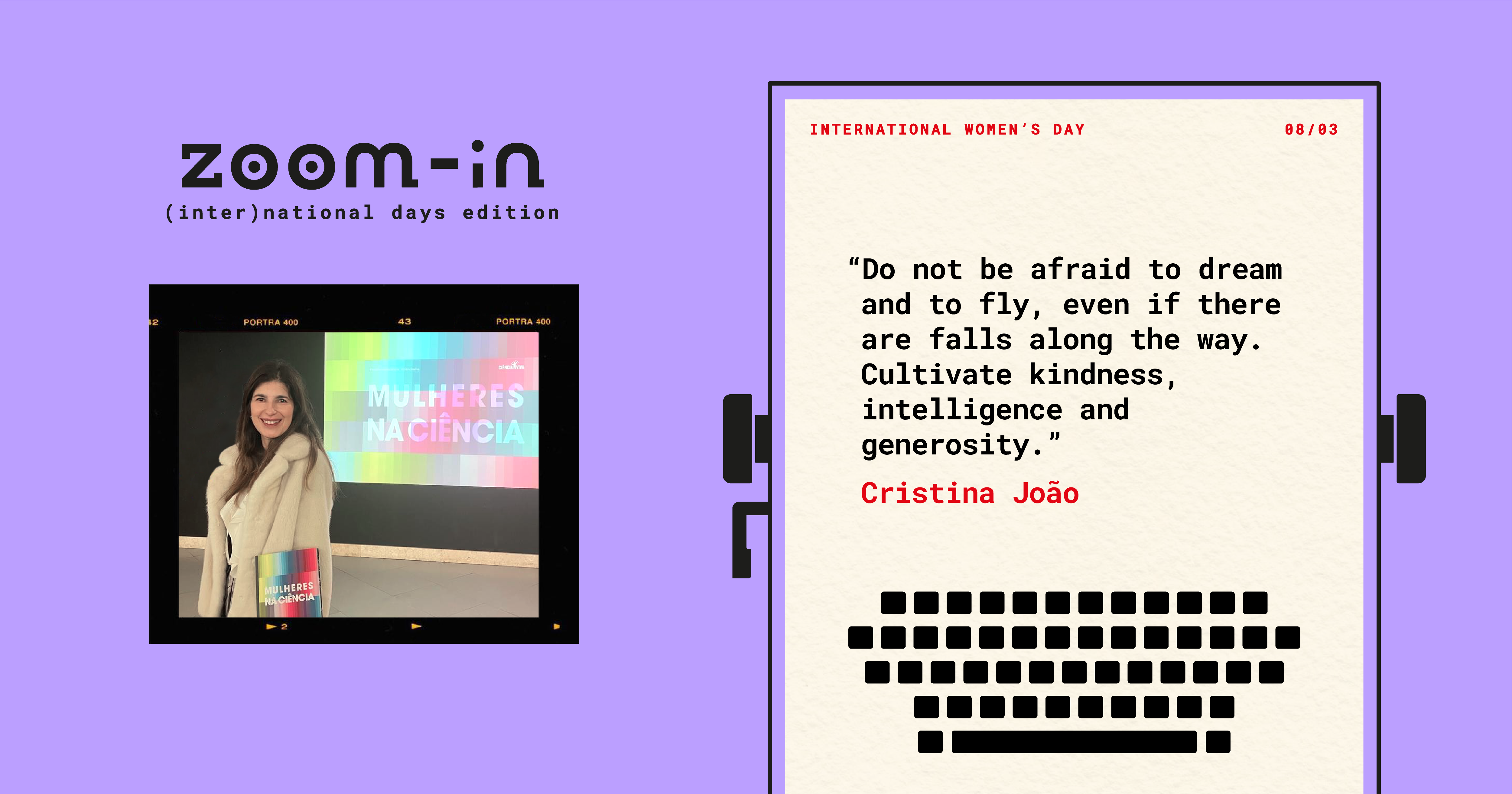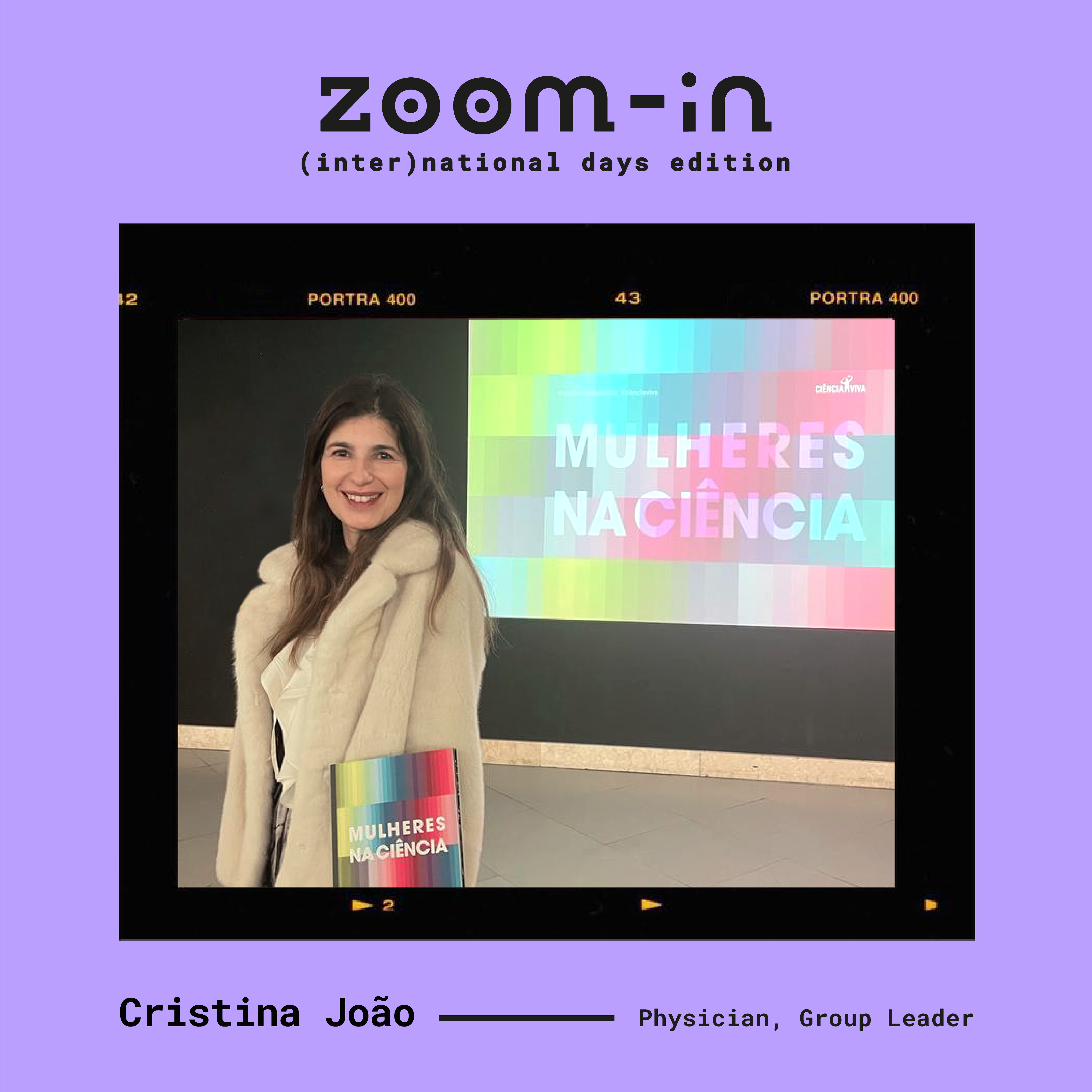In 1975 (International Women’s Year), the United Nations recognised March 8 as International Women’s Day, but did you know that the date has been important to women’s rights since 1908, when hundreds of female workers in New York demonstrated to form their own union and demand the right to vote? Each year, this date reminds us to strive for a fairer society, regardless of gender.
Cristina João is a Haematologist at the Champalimaud Foundation Clinical Centre and is currently responsible for the Myeloma Lymphoma research group. She is also a Professor of Immunology at the Faculty of Medical Sciences of Universidade Nova de Lisboa.
Published in many leading journals, and having extensive experience as a clinician and researcher, Cristina João was a perfect choice to feature in the Ciência Viva ‘Women in Science book, which has also been released today to celebrate International Women’s Day 2023, as an example of a physician scientist who devotes her life to caring for patients and studying better ways of treating them.
Why is International Women’s Day important to you?
In a world where we are increasingly aware of inequalities, it is still important to emphasise that gender inequality is still a reality. Until recently, women were often overlooked in more demanding situations from a social or professional point of view, such as postgraduate training or leadership positions. Currently, and in developed countries, this inequality is blurred but in a global context it continues to make perfect sense to remember and value International Women's Day.
I think that in addition to the tribute paid to important Portuguese women, on this day it is important to structure plans that aim to erase gender inequalities in the present and in the future, especially in more disadvantaged contexts and in diverse social areas such as culture, education, innovation, entrepreneurship.
Specifically within the scientific community, the biggest challenge for women is still the lack of strong leadership examples. Most leadership positions are still taken by men, due to historical reasons. The example we give to girls and young students is still weak regarding the example of women as strong and frequent leaders.
There has been a language shift recently – with people talking about ‘equity’ rather than ‘equality’. What does Equity for Women mean to you and your career?
We can start by differentiating the two concepts. Equality is treating different people equally, in this case genders. Equity is treating each one appropriately according to their circumstances, without allowing favouritism or illegitimate preferences. Suitability has to balance the circumstances, tastes and the full potential of each individual. It implies team leadership work and openness to less conventional growth. Usually, in professional environments, we can start by noticing differences in terms of preferences for job opportunities or salary.
Science has been an area where meritocracy has been sought, so inequality may not be as notorious. However, globally, and specifically in science, and due to the lack of adequate opportunities made available to women on a sustained basis, there are more men in top scientific positions, more reviewers and decision-makers who are men, and more men as leaders of groups and heads of institutions. There is still a way to go, even in science.
What aspects of STEM (Science, Technology, Engineering and Mathematics) are improved by the presence of more women in the field?
Female students and employees are under-represented in STEM. In schools, most female students would rather pursue the arts, rather than subjects like mathematics and engineering. This phenomenon can be termed the STEM gender gap.
I believe that bringing more women into prominent positions in STEM fields brings diversity and greater ease in solving problems with more practical objectives and more connected to everyday reality.
Diverse teams actually produce better outcomes. Whether it be cognitive diversity, gender diversity or even just a mere difference in the size of the group, it is acknowledged that alternative perspectives more often than not lead to the optimal solution.
You have featured in the latest Ciência Viva ‘Women in Science’ book. How did you feel when you found out that you had been recognised as one of the featured scientists?
I received the invitation to join this year's group of recognised women in Science and I was really honoured and also a bit surprised. Sometimes we think that our activities are not visible or even go unnoticed. It is good to know that there is attention. I think this recognition is mainly due to my work as a doctor-scientist, always with one foot in the clinic and the other in research, but also to my activities in pre- and post-graduation medical education. In addition, I am active in the dissemination of science and I frequently collaborate with secondary schools, the Order of Biologists and Patient Associations, among other institutions.
Do you have any message you would like to pass on to anybody interested in pursuing a career in STEM, but particularly women and girls?
Be persistent and prepared for situations and do not be afraid to speak out, to participate, to give your opinion. Do not be afraid to dream and to fly, even if there are falls along the way. Cultivate kindness, intelligence and generosity.
Edited by John Lee, Content Developer of the Champalimaud Foundation Communication, Events and Outreach team.



